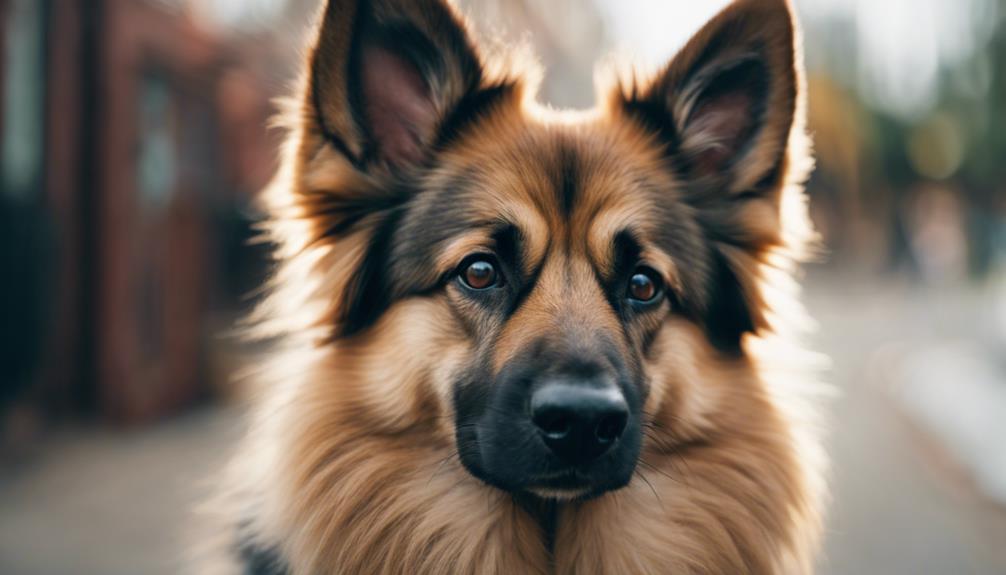🐾 Paw-some Partnership Alert! 🐾
As a pack of German Shepherd enthusiasts at MixGermanShepherd.com, we're always sniffing out the best products for our furry friends. Guess what? When you fetch something from Amazon through our links, we earn a little treat! 🦴
Have you ever wondered what happens when the grace of the German Shepherd meets the charm of the Pomeranian? The German Shepherd Pomeranian mix breed, with its intriguing blend of traits, offers a unique combination that captures the attention of dog enthusiasts. From their appearance to their temperament, these hybrid dogs possess a captivating allure that sets them apart from purebred counterparts. Discover what makes this crossbreed a fascinating addition to the world of canine companionship.
Key Takeaways
- Unique physical appearance due to diverse genetic influences.
- Blend of loyalty, protectiveness, and individual personalities.
- High intelligence, adaptability, and suitability for specialized roles.
- Health maintenance, grooming needs, and compatibility with various households.
Appearance and Size
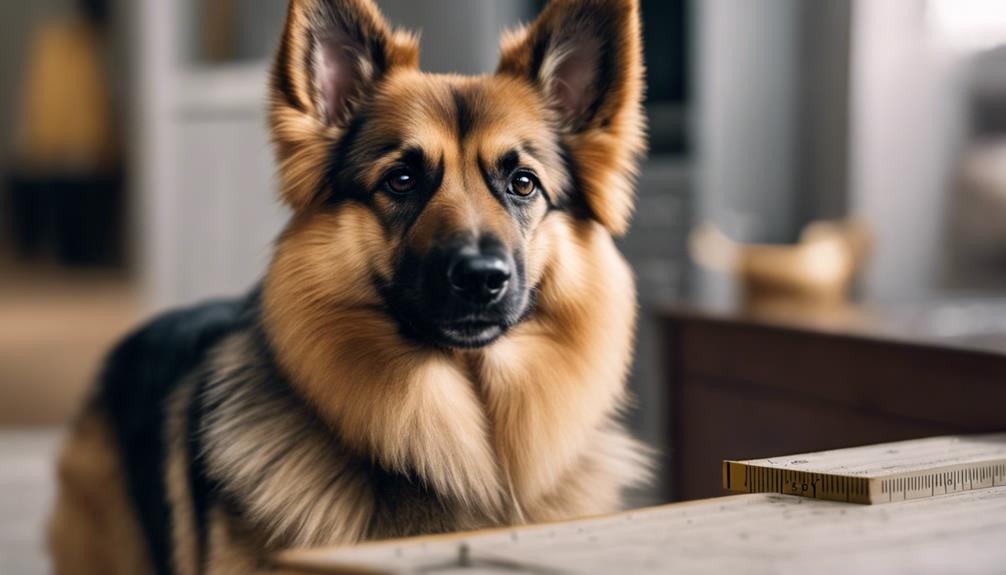
When considering the appearance and size of German Shepherd Pomeranian mixes, their physical characteristics can vary significantly due to inheriting genes from both parent breeds. These mixes often have a compact and proportional frame, with traits such as big eyes, medium ears, and a long curly tail. The coat length and color of these dogs are unpredictable, as they can inherit any combination of genes from their German Shepherd and Pomeranian parents. This variability results in a wide range of coat colors, reflecting the diverse possibilities present in both breeds.
In terms of size, German Shepherd Pomeranian mixes typically stand around 14 inches in height and weigh about 35 pounds on average. However, due to the differences in their parent breeds, the size of these mixes can fall within a broader range. For males, they can range from 15-19 inches in height and 34-49 pounds in weight, while females may vary from 14-17 inches in height and 26-39 pounds in weight. This variance in size adds to the uniqueness of the German Shepherd Pomeranian mix, making each dog a distinct combination of characteristics inherited from their parents.
Temperament and Personality
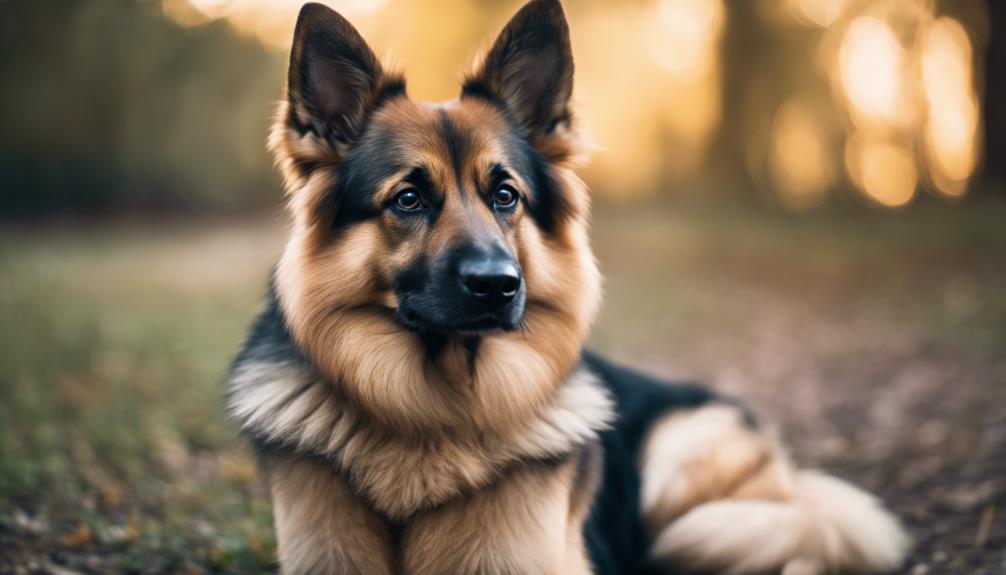
To understand the temperament and personality of the German Shepherd Pomeranian mix, one must consider the blend of traits inherited from both parent breeds. This mix breed can exhibit a unique combination of loyalty and protectiveness, traits commonly seen in the German Shepherd parent. Socialization plays a crucial role in shaping their temperament, especially to prevent any assertive behavior, particularly around children.
Due to the diverse nature of characteristics inherited from the German Shepherd and Pomeranian, each dog may display a distinct personality. The temperament of this mix breed can vary widely, making it essential for owners to understand and cater to their individual needs. Training and positive reinforcement are key in molding the personality of the German Shepherd Pomeranian mix. Consistent training methods that focus on positive reinforcement can help bring out the best in their temperament and behavior.
When approaching the temperament and personality of the German Shepherd Pomeranian mix, it is essential to recognize the mix of traits inherited, the importance of socialization, and the impact of training. By understanding these factors and providing a supportive environment, owners can help foster a well-rounded and balanced companion with a delightful personality.
Intelligence and Trainability
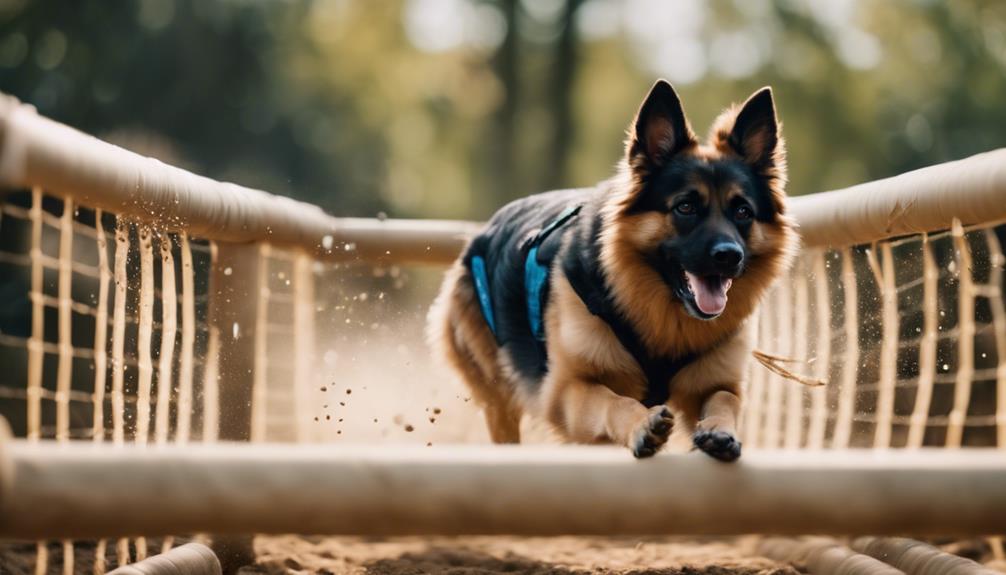
You'll find that the German Shepherd Pomeranian mix boasts a high level of intelligence, a trait passed down from both parent breeds. This intelligence translates into excellent trainability, as they are quick to grasp commands and eager to learn. Their problem-solving skills and adaptability make training this breed relatively easy and enjoyable for both you and your furry companion.
Smart Breed Traits
The intelligence and trainability of the German Shepherd Pomeranian Mix breed set them apart as highly adaptable and versatile companions. Inherited from their intelligent parent breeds, this mix is known for being highly trainable, excelling in learning commands, tricks, and tasks with consistency and positive reinforcement. Their intelligence makes them well-suited for various roles such as service dogs, therapy dogs, and working dogs, thanks to their ability to quickly grasp tasks. Early obedience training is crucial for channeling their intelligence effectively and preventing behavioral issues. Due to their high trainability and intelligence, they thrive in obedience training and agility activities, making them a versatile and adaptable breed for various tasks and environments.
Easy to Train
With their exceptional intelligence and trainability, the German Shepherd Pomeranian mix proves to be a remarkably easy breed to train, excelling in obedience tasks and quickly mastering new commands and tricks. This mix is not only intelligent but also eager to please, making them quick learners when it comes to training. Their adaptability and strong work ethic further contribute to their success in various training tasks. Here are five reasons why the German Shepherd Pomeranian mix is a breeze to train:
- Highly intelligent, quick learners.
- Eager to please their owners.
- Excel in obedience training.
- Strong work ethic for advanced tasks.
- Adaptable to different living situations.
Health and Lifespan
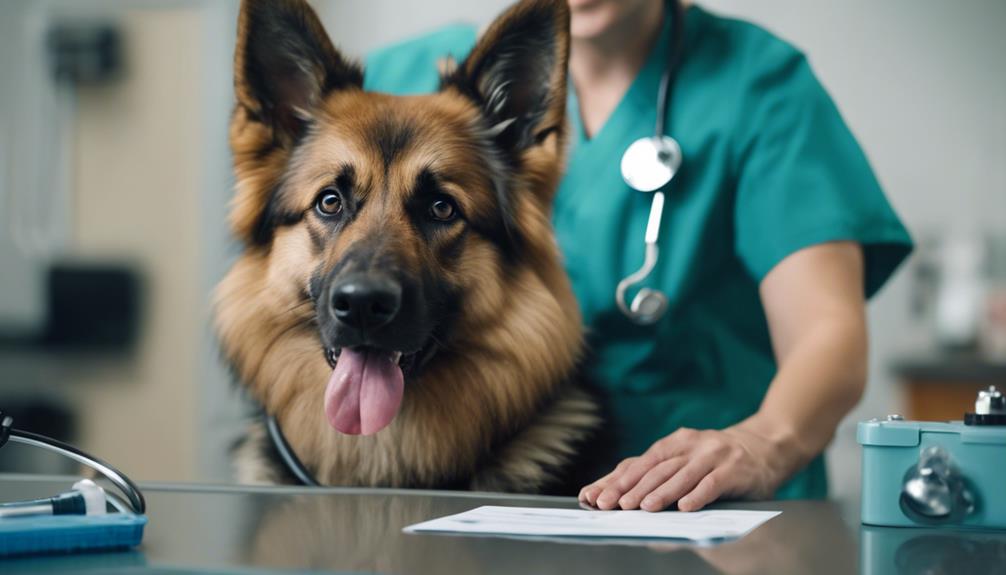
When considering the health of your German Shepherd Pomeranian mix, it's important to be aware of potential issues like joint dysplasia and dental problems that may arise. Understanding these common health concerns will help you provide the best care for your furry companion. Additionally, with a lifespan ranging from 10 to 15 years, proper vet check-ups and a balanced diet are essential for ensuring a long and healthy life for your mixed breed pet.
Health Considerations
Considering the genetic influences from both parent breeds, the lifespan of German Shepherd Pomeranian mixes typically ranges between 10 and 15 years, with various health considerations impacting their overall well-being.
- Common Health Issues: Hip dysplasia, luxating patellas, degenerative myelopathy, hypothyroidism, epilepsy, and dental disease.
- Regular Vet Check-ups: Crucial for early detection and management of potential health concerns.
- Weight Management: Important for overall health and well-being.
- Bone and Joint Health: Proper nutrition and supplements like glucosamine and fish oils are essential.
- Breed-specific Health Risks: Awareness of issues like collapsed trachea and Legg-Calve-Perthes Disease is crucial for a healthier life.
Lifespan Expectations
Curious about the lifespan expectations for the German Shepherd Pomeranian mix and how it relates to their health? The German Shepherd Pomeranian mix typically lives between 10 to 15 years, with genetic traits from both parent breeds influencing their longevity. To ensure a healthy lifespan, it's crucial to address common health issues such as hip dysplasia, luxating patellas, and hypothyroidism. Regular vet check-ups play a vital role in early detection and overall well-being. Weight management and providing proper nutrition are key factors in preventing potential health risks in this crossbreed. Understanding their unique dietary needs is essential for maintaining the health and longevity of your German Shepherd Pomeranian mix.
| Lifespan Expectations | Health Issues | Veterinary Check-ups |
|---|---|---|
| 10 to 15 years | Hip Dysplasia, Luxating Patellas, Hypothyroidism | Regular for early detection |
Exercise and Activity Needs
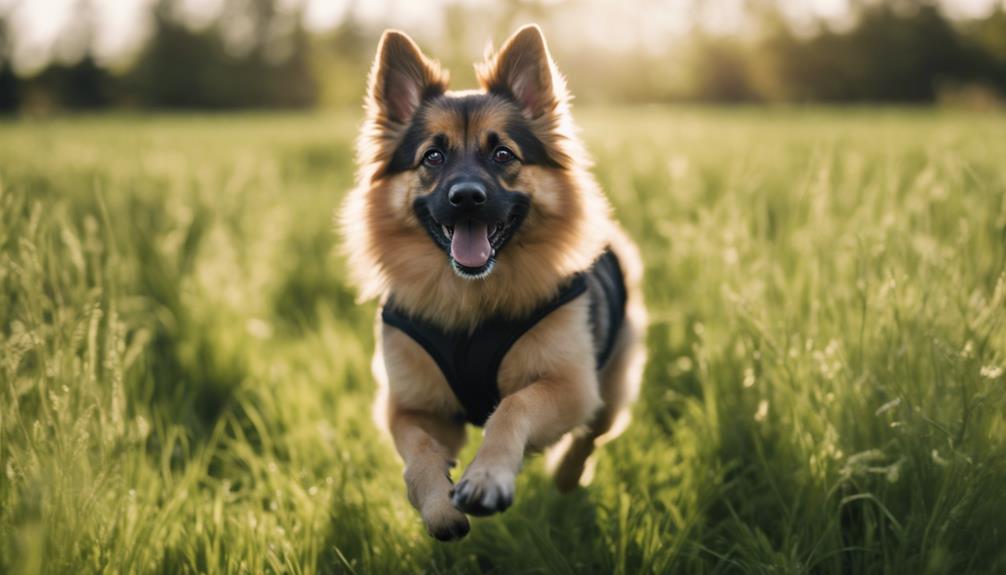
To ensure the optimal well-being and behavioral balance of your German Shepherd Pomeranian mix, regular exercise is essential. Here are some key points to consider when addressing the exercise and activity needs of your unique hybrid breed:
- Regular Exercise: German Shepherd Pomeranian mixes require consistent physical activity to stay healthy and happy.
- Outdoor Activities: Engaging your dog in outdoor activities in open spaces can help them expend excess energy effectively.
- Toys for Mental Stimulation: Providing toys such as balls and frisbees can keep your dog entertained and mentally engaged.
- Behavioral Problems Prevention: Regular exercise is crucial in preventing behavioral issues that may arise from pent-up energy.
- Dedicated Time: Allocating dedicated time each day for exercise ensures your dog receives the necessary physical activity for their overall well-being.
Failure to meet the exercise needs of your German Shepherd Pomeranian mix can lead to behavioral problems and impact their happiness and health. By incorporating regular exercise, outdoor activities, stimulating toys, and dedicated time into your routine, you can help your furry companion lead a balanced and fulfilling life.
Grooming and Care Requirements
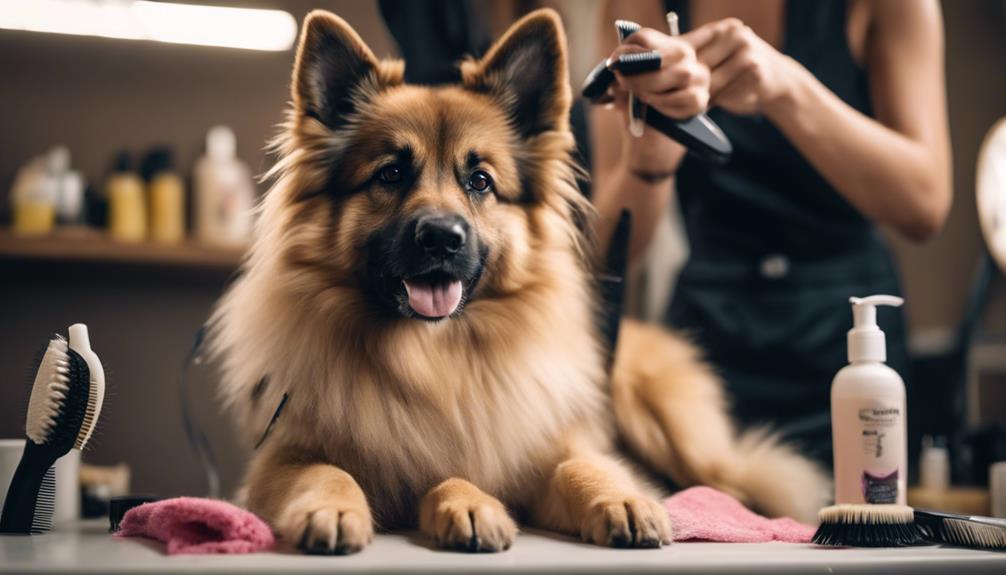
Regular grooming is essential for maintaining the well-being and coat health of your German Shepherd Pomeranian mix. Due to their double coat inherited from both parent breeds, regular brushing is crucial to prevent matting and reduce shedding. Brushing not only helps in maintaining the coat's quality but also promotes healthy skin by distributing natural oils. To keep their coat in top condition, regular baths should be part of your grooming routine.
In addition to brushing and baths, other grooming tasks are necessary for your German Shepherd Pomeranian mix. Regular ear cleaning is important to prevent infections, teeth brushing helps maintain dental health, and face washing keeps their facial fur clean and free from debris. Since the Pomeranian parent breed is prone to eye issues, it is crucial to keep their eyes clean and check for any signs of irritation or infection.
Compatibility With Families and Pets

With their affectionate and loyal nature, German Shepherd Pomeranian mixes seamlessly integrate into families of all sizes, showcasing adaptability and versatility that extends to harmonious coexistence with children and other pets. Here are some key points to consider regarding their compatibility with families and pets:
- Loyal Companions: German Shepherd Pomeranian mixes are devoted to their family members, forming strong bonds and offering unwavering loyalty.
- Adaptable Nature: Their adaptable temperament allows them to adjust well to various household dynamics, making them suitable for families with different lifestyles.
- Protective Instincts: These mixes exhibit protective instincts, serving as excellent watchdogs to ensure the safety of their loved ones.
- Socialization Importance: Proper socialization and training are crucial to help them interact positively with both humans and other pets in the household.
- Big Heart in a Small to Medium Size: Despite their smaller size, these hybrids have a big heart filled with love and affection for their family members.
Frequently Asked Questions
What Does a German Shepherd Pomeranian Mix Look Like?
When you see a German Shepherd Pomeranian mix, you notice a blend of striking coat colors, variable sizes, and distinct facial features. Their temperament traits, exercise needs, grooming requirements, health concerns, training challenges, playful behaviors, and socialization tips create unique companions.
What Are the Unique Characteristics of Pomeranian?
When it comes to Pomeranians, their unique characteristics shine through. With a playful temperament, fluffy coat, and intelligent breed, they make loyal companions. Despite their small size, their bold personality, energetic nature, alert watchdog skills, curious behavior, and love for social interaction set them apart.
Are German Shepherds Good With Pomeranians?
German Shepherds are good with Pomeranians due to their protective nature. Proper training and socialization are crucial to manage temperament differences. Supervise interactions because of size. Both breeds can form strong bonds when introduced correctly.
What Is the Rarest Type of Gsd?
In the world of German Shepherds, the rarest type is the Panda German Shepherd, coveted for its unique black and white coat. This special color variation stems from a genetic mutation, setting these dogs apart.
Conclusion
You've learned about the unique qualities of the German Shepherd Pomeranian mix breed. Did you know that these majestic dogs have an average lifespan of 10-15 years? Imagine spending a decade or more with a loyal and protective companion who embodies the best of both the German Shepherd and Pomeranian breeds. With proper care and attention, these hybrid dogs can bring joy and love to your family for many years to come.
